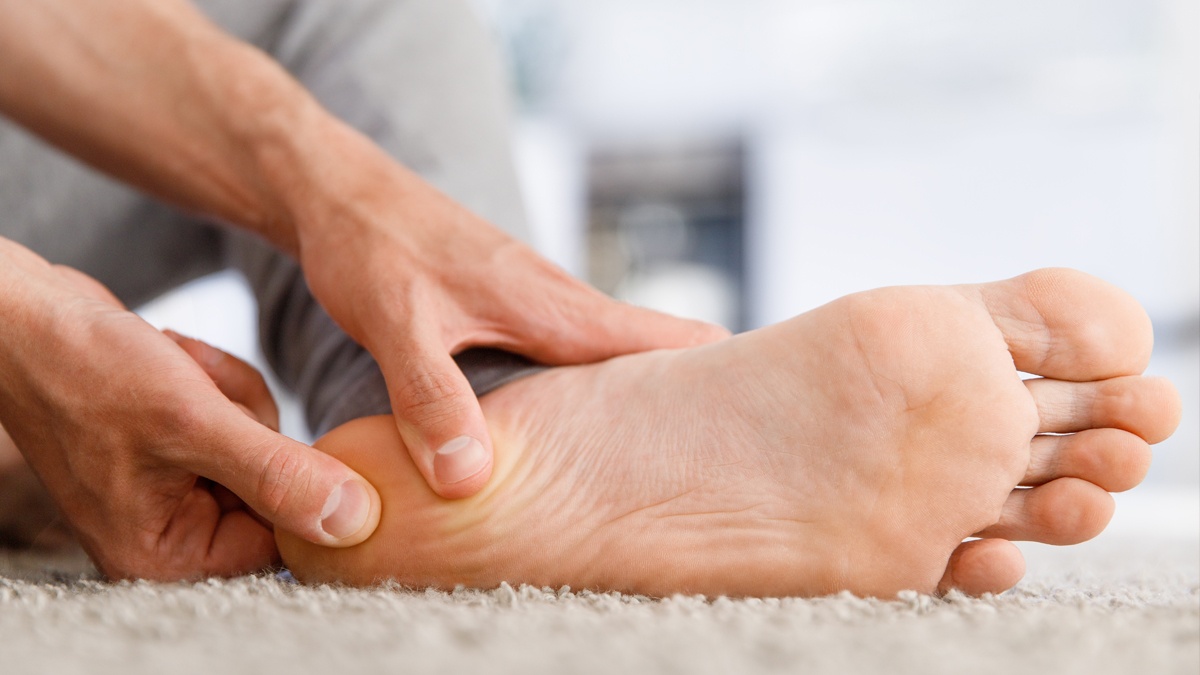The COVID-19 pandemic has resulted in myriad health issues. Perhaps the least discussed maladies result from working at home, out of your normal routine.
“I feel I have seen more foot stress fractures, especially during the beginning of the pandemic,” said Michael Sims, M.D., an orthopedic surgeon specializing in disorders of the foot and ankle and practices in Greenville as part of Piedmont Orthopedics Associates and the Bon Secours St. Francis Health System. “These were during the warmer months and people were outside more and active. A rough estimate is about a 10% increase over the past year.”
Injuries during the pandemic run the gamut from severe acute broken bones and dislocations to more chronic conditions such as tendonitis, plantar fasciitis, arthritis, bunions, hammertoes and pain.
“Chronic injuries and ailments are not normally as severe,” according to Dr. Sims but often require surgery.
Andrew Saffer, D.P.M., of Carolina Foot & Ankle Specialists in Mount Pleasant, said the number of broken toes he has treated has tripled since the pandemic started.
“The main reason is that with the pandemic, people are spending more time at home. People are going around their homes barefoot and hitting toes against furniture or dropping bottles of wine or heavy jars on their feet.”
Dr. Saffer said if individuals suffer foot injuries, it is a good idea to know whether the toe is broken or sprained, which can be determined by an X-ray.
“If the toe or foot is fractured and heals in the wrong position, you may suffer from long-term complications such as post-traumatic arthritis and chronic foot pain. Your chances of long-term issues with healing go way down if the toe or foot heals in the correct position as opposed to the wrong position.”
Dr. Saffer explained that initial treatment for fractured toes is “buddy splinting” and immobilization with a surgical shoe or walking boot. Fractured toes take approximately six to eight weeks to heal. Some toe fractures that are out of alignment may need to be placed in the correct alignment or require surgery, he said.
People most susceptible to stress fractures are those who have not been active and have decided to suddenly increase their activity, Dr. Sims added.
“This often means the person is not prepared and is wearing poor shoes. I advise buying a good pair of sturdy shoes,” he said.
Flimsy shoes and sandals do not provide much support for the foot, he pointed out.
“They are not bad shoes, but they are not good shoes to exercise in. You want a shoe that has cushion but also does not bend much. Any shoe that can be bent in half does not provide the stiffness and support you need,” he explained.
Dr. Saffer is “seeing more stress fractures due to overuse injuries.” He explained: “Being less active during the pandemic can lead to weight gain. This increased load to the feet, along with restarting a new exercise program too quickly, can lead to increased forces into the foot, which can develop into a potential stress fracture. I have seen a great number of metatarsal stress fractures during the pandemic.”
Stress fractures of the feet present as acute pain and increased swelling in the foot, though it may take 10 to 14 days for them to be visible on an X-ray.
“It is imperative to treat stress fractures promptly,” said Dr. Saffer.
Stress fractures take six to eight weeks to heal and usually are treated with immobilization with a cam walker boot.
Another common condition Dr. Saffer has encountered during the pandemic is heel pain, such as plantar fasciitis Achilles tendonitis.
“These overuse conditions can be caused from walking barefoot around the house, delaying treatment of acute heel pain and resuming training too quickly during a period of inactivity. More people are exercising at home during the pandemic and may be doing unsupervised high-impact workouts too soon and too much, which can lead to these acute painful foot conditions.”
To prevent stress fractures, Dr. Sims recommended taking vitamin D3 daily and being sure to slowly increase walking distances over a couple of weeks to help build bone.
Both doctors pointed out that wearing a good pair of shoes designed specifically for running or walking, or even for around the house, can prevent leg and foot injuries. Stretching exercises aimed at the ankle and foot will keep the ligaments, muscles and tendons loose and help prevent potential tears and sprains. It is always important to have at least one rest day for the body to recover and heal and to change up your exercise routine to minimize overuse injuries.
By John Torsiello
